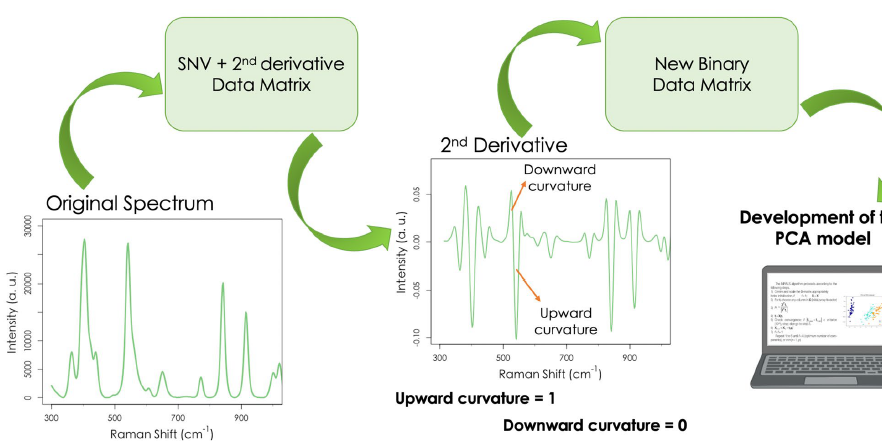August 18th, 2023 – The first study on the identification of powdered complex cell culture media was published in collaboration with Karla Echeverría-Altamar, a Ph.D. Candidate from the Bioengineering Program, at the UPRM. The study describes the first efforts to build a spectral library to identify four cell culture media in powder form with spectra obtained with a handheld Raman spectrometer.
Echeverría-Altamar, K.; Alvarado-Hernandez, B. B.; Resto-Irizarry, P.; Romañach, R. J. Identification of Four Similar Cell Culture Media According to Their Glucose, Glutamine, and Pyruvate Content by Handheld Raman Spectroscopy. Pharm. Res. 2023, 40 (12), 2859–2871.
Abstract
This study describes the first efforts to build a spectral library to identify four cell culture media in powder form with spectra obtained with a handheld Raman spectrometer. These complex mixtures contain over 30 components and are among the most widely used cell culture media. A total of 32 spectra were collected for the four Dulbecco’s Modified Eagle Medium cell culture media and pure materials (glucose and L-glutamine) in powder form. The spectra were preprocessed using standard normal variate with second derivative, and the barcode method before performing principal component analysis (PCA). The PCA model differentiated the pure glucose and the cell culture media according to the glucose concentration along the first principal component. The second principal component differentiated the three cell culture media with high glucose content according to the pyruvate concentration. The correlation coefficient showed that powdered cell culture media with high glucose concentration have a higher correlation with pure glucose, when compared with the cell culture media with low glucose. The Raman spectra made it possible to differentiate the four DMEM in the cell culture media from the majority of the external samples used in the method evaluation. However, sample heterogeneity affected the predictions. Additional studies are needed to improve the method’s ability to differentiate the DMEM with high glucose.
https://link.springer.com/article/10.1007/s11095-023-03584-z






